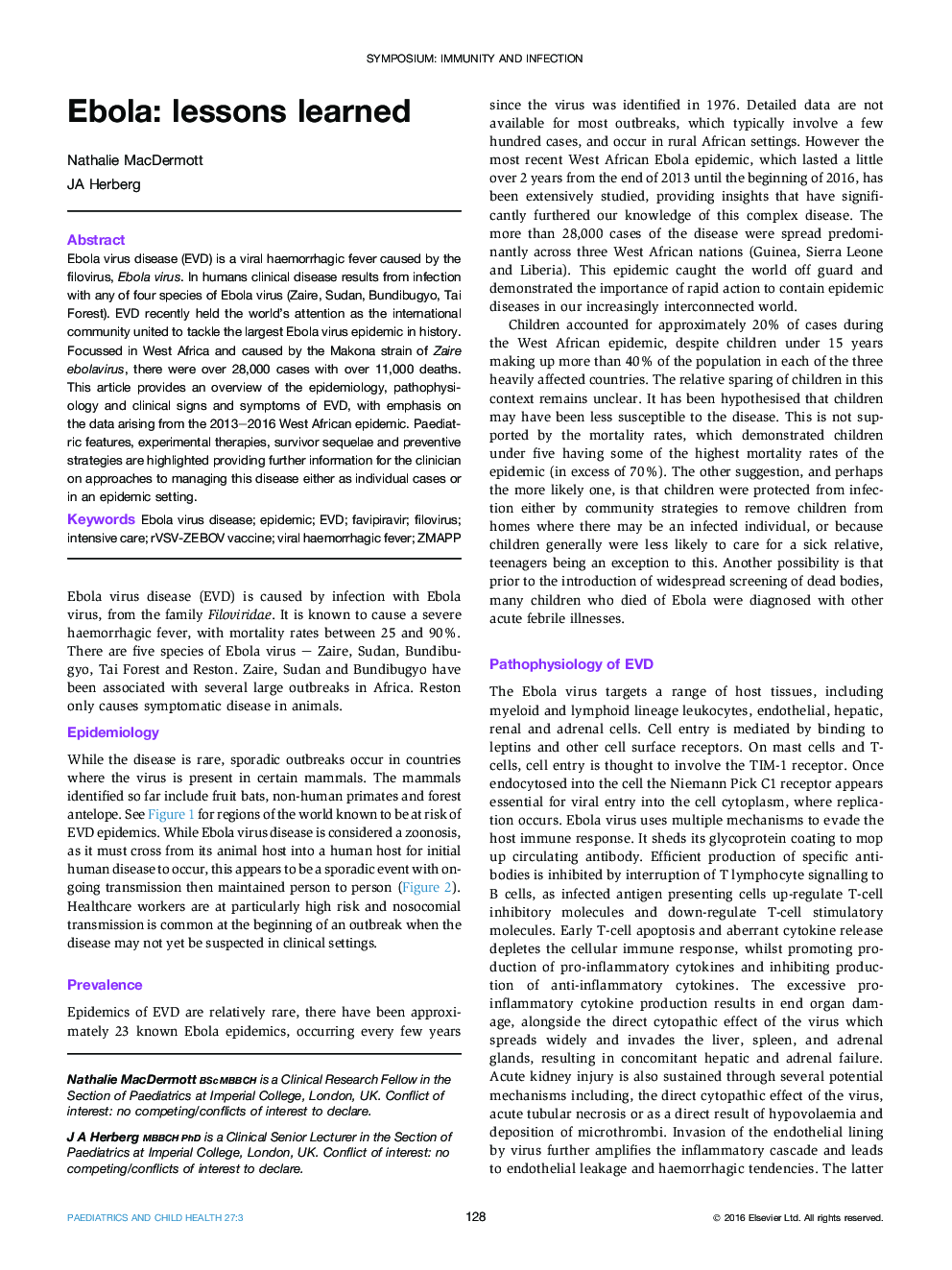| Article ID | Journal | Published Year | Pages | File Type |
|---|---|---|---|---|
| 5720087 | Paediatrics and Child Health | 2017 | 7 Pages |
Ebola virus disease (EVD) is a viral haemorrhagic fever caused by the filovirus, Ebola virus. In humans clinical disease results from infection with any of four species of Ebola virus (Zaire, Sudan, Bundibugyo, Tai Forest). EVD recently held the world's attention as the international community united to tackle the largest Ebola virus epidemic in history. Focussed in West Africa and caused by the Makona strain of Zaire ebolavirus, there were over 28,000 cases with over 11,000 deaths. This article provides an overview of the epidemiology, pathophysiology and clinical signs and symptoms of EVD, with emphasis on the data arising from the 2013-2016 West African epidemic. Paediatric features, experimental therapies, survivor sequelae and preventive strategies are highlighted providing further information for the clinician on approaches to managing this disease either as individual cases or in an epidemic setting.
